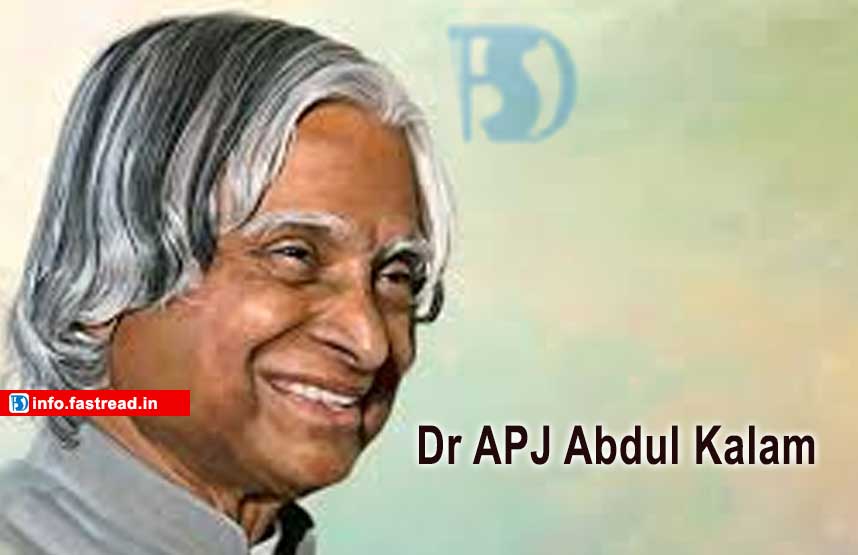Essay in very simple language with the boundaries of different words here. Here you can find Essay, Paragraph, Article on Dr APJ Abdul Kalam in English language for 5, 6, 7, 8, 9, 10, 11, 12 or IAS, IPS Banking and other competitive exams.
DR. APJ ABDUL KALAM
Dr. APJ Abdul Kalam served the nation as the 11th President of India during July 2002 to July 2007. A notable scientist and an engineer, he is often referred to as the ‘Missile Man of India’.
Born on October 15, 1931 at Rameshwaram in Tamil Nadu, Dr. Avul Pakir Jainulabdeen Abdul Kalam, specialized in Aeronautical Engineering from Madras Institute of Technology. Dr. Kalam made significant contribution as Project Director to develop India’s first indigenous Satellite Launch Vehicle (SLV¬III), which successfully injected the Rohini satellite in the near earth orbit in July 1980 and made India an exclusive member of the Space Club. He was responsible for the evolution of the Indian Space Research Organisation’s (ISRO) launch vehicle programme, particularly, the Polar Satellite Launch Vehicle (PSLV) configuration.
After working for two decades in ISRO and mastering launch vehicle technologies, Dr. Kalam took up the responsibility of developing Indigenous Guided Missiles at Defence Research and Development Organisation as the Chief Executive of Integrated Guided Missile Development Programme (IGMDP). He developed and operationalised AGNI and PRITHVI missiles and for building indigenous capability in critical technologies through networking of multiple institutions. He worked as the Scientific Adviser to Defence Minister and Secretary, Department of Defence Research & Development from July 1992 to December 1999. During this period, he led to the weaponisation of strategic missile systems and the Pkhran-II nuclear tests in collaboration with the Department of Atomic Energy, which made India a nuclear weapon state. He also gave thrust to self-reliance in defence systems by progressing multiple development tasks and mission projects such as Light Combat Aircraft.
As Chairman of Technology Information, Forecasting and Assessment Council (TIFAC) and as an eminent scientist, he led the country to arrive at Technology Vision 2020. Above all, he took up a mission to ignite the young minds for national development by meeting high school students across the country. His focus was on transforming India into a developed nation by 2020.
Dr. Kalam was one of the most distinguished scientists of India with the unique honour of receiving doctorates from 40 universities and institutions. He had been awarded the coveted civilian awards—Padma Bhushan (1981) and Padma Vibhushan (1990) and the highest civilian award, Bharat Ratna (1997). He was a recipient of several other awards and fellow of many professional institutions. His 79th birthday was recognised as World Students’ Day by United Nations.
On April 29, 2009, he became the first Asian to be bestowed with the Hoover Medal, America’s top engineering prize, for his outstanding contribution to public service. He wrote four books—”India 2020–A Vision for the New Millennium” (1998), “Wings of Fire” (1999), “Ignited Minds–Unleashing the Power within India” (2002) and “My Journey: Transforming Dreams into Actions” (2013).
Dr. Kalam died in Shillong on July 27, 2015 while delivering a lecture. We, the people of India, will never forget his contribution in the making of modern India.

